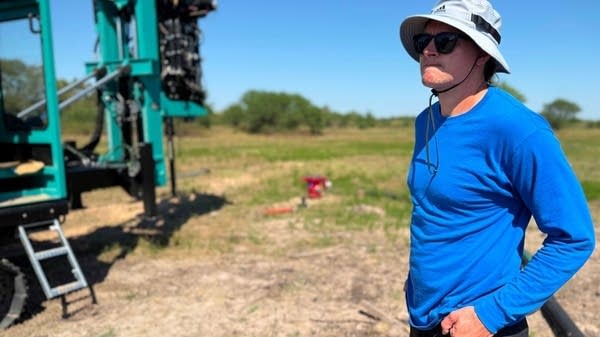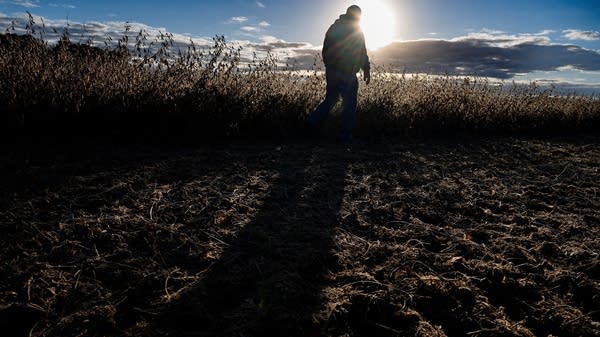To meet a hunger for welders, a Baltimore community college expands training
More than a fifth of welders in the U.S. are over the age of 55. Demand for new ones is expected to increase.

Instructor Josh Dicus commands everyone’s attention as he demonstrates what’s known as shielded metal arc welding.
“I'm going to do a nice steady drag the whole way down,” Dicus said. “Go ahead and go dark.”
The dozen or so students in this fundamentals class just outside Baltimore all “go dark”— that is, pull their welding masks down over their eyes. They watch Dicus drag an electrode along another piece of metal, melting both.
This lesson is at Earlbeck Gases and Technologies, a welding supply company that partners with the Community College of Baltimore County. With more than a fifth of welders in the US over the age of 55, demand for new ones is expected to increase over the next several years. In Baltimore, the workforce needs include the building of a new bridge that will stand where the Francis Scott Key Bridge once did. There’s a goal of having it up by October 2028. To help meet the need and recruit locally, the community college is expanding its existing welder training program.
When the demonstration is over, the students go into booths and start working.
“Once you get some welds down, have me or Mr. Bill take a look at it,” Dicus tells them.
One student, 20-year-old Hunter Leilich, isn’t happy with his first attempt
“I already know I ran it too fast,” he said.
Leilich said learning to weld can be scary. In an earlier class, he held his torch too close to the metal and sparks went everywhere.
“It didn't hurt, thankfully. But it did freak me out a couple of times,” he said.
Leilich — maybe appropriately — is wearing a heavy metal band t-shirt under his flame retardant jacket. He said he’s here because he wants to work with his hands and he thinks welding looks really cool. He’s hoping to get work repairing ships, or building the new Key Bridge.
Instructor Josh Dicus said welders have to be willing to work in a variety of conditions.
“Outside in the middle of summertime, in the middle of wintertime,” he said. “Things like pipe welding, iron working, you're working at heights, working in confined spaces and confined areas.
It can also be dangerous. Dicus, who’s 32, has had three of his fingertips cut off and reattached, as well as a couple of herniated back discs and more burns than he can keep track of. He emphasizes safety to his students.
“Working in the trades, hands, eyes, back, those are your big things to really want to take care of,” he said.
Pay for welders varies based on skill level, job type, and location: nationally, the median salary is $55,600, according to the American Welding Society.
Despite the need, there have been challenges attracting young people to this work, said Josh Wyner, executive director of the Aspen Institute's College Excellence Program.
“Many people see welding as a dirty job, and while it has been transformed to be something that's much more technologically driven, there is a legacy in terms of perceptions about the jobs,” said Wyner.
But Sandra Kurtinitis, the president of Community College of Baltimore County said she’s expecting students to show up to the expanded program.
”I'm not anticipating that we're going to have a party and nobody will come. This is a very, very rich opportunity for young people, old people,” said Kurtinitis.
Meanwhile, Allison Earlbeck, CEO of Earlbeck Gases and Technologies, which is partnering with the community college on the expansion, said the country needs more people to move into those jobs.
“It's just about our state of infrastructure in general, where we are trying to rebuild a lot of the stuff that we've neglected in the United States for quite a long time,” said Earlbeck.
Also, some older students who have been welding for years are using this class to level up.
“These guys give it to me pretty good about me being the old man, but that's all right. I've earned it,” said Brad Austin, who’s 63, and taking the welding fundamentals class.
Austin works in utilities, and said his employer, Baltimore County, is footing the bill for him and a few co-workers to be here. This class usually costs about $2,000.
Austin said he learned to weld growing up on a farm, and this is his first formal training.
“Just knowing the principles behind it and correcting probably 50 years of bad habits is very useful,” said Austin.













